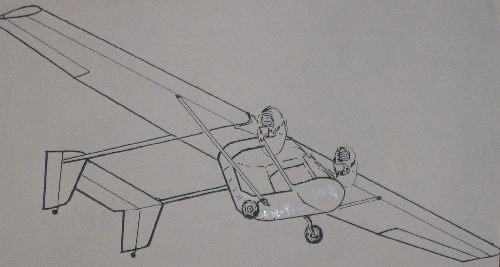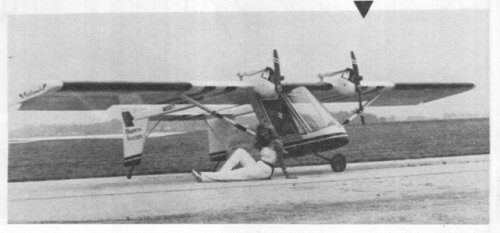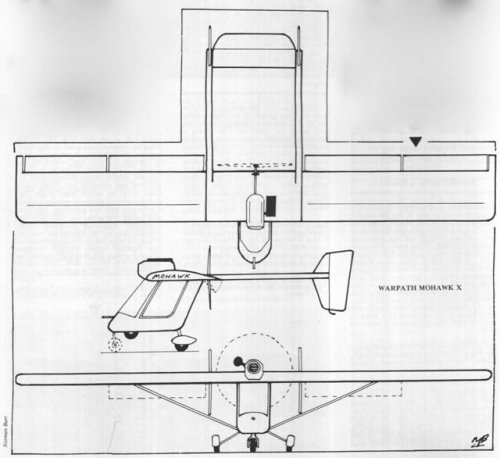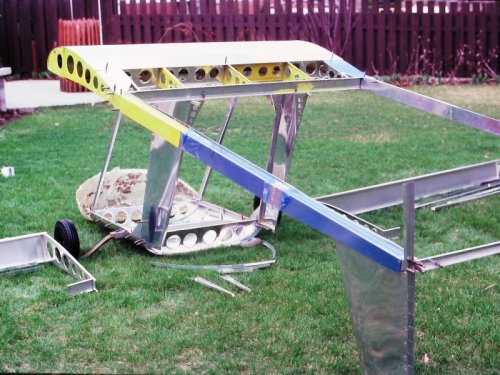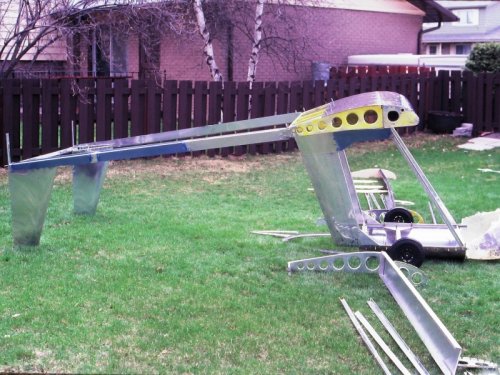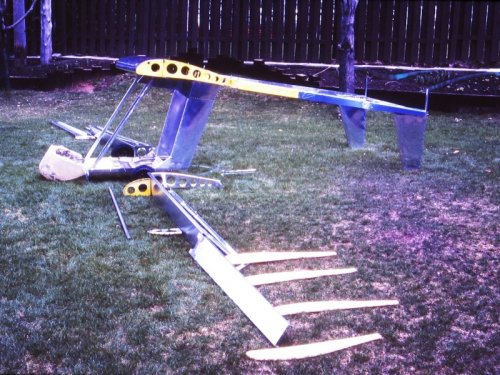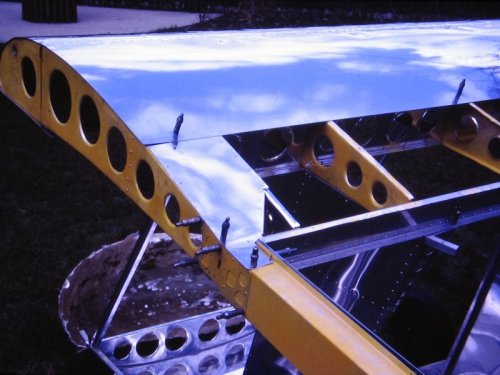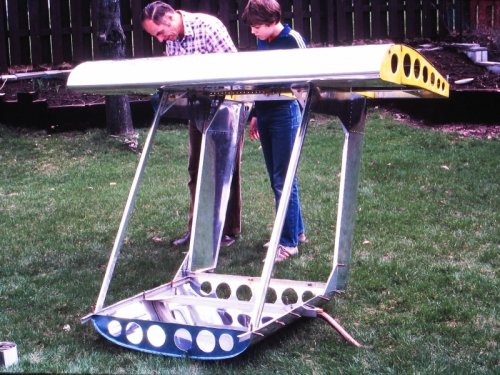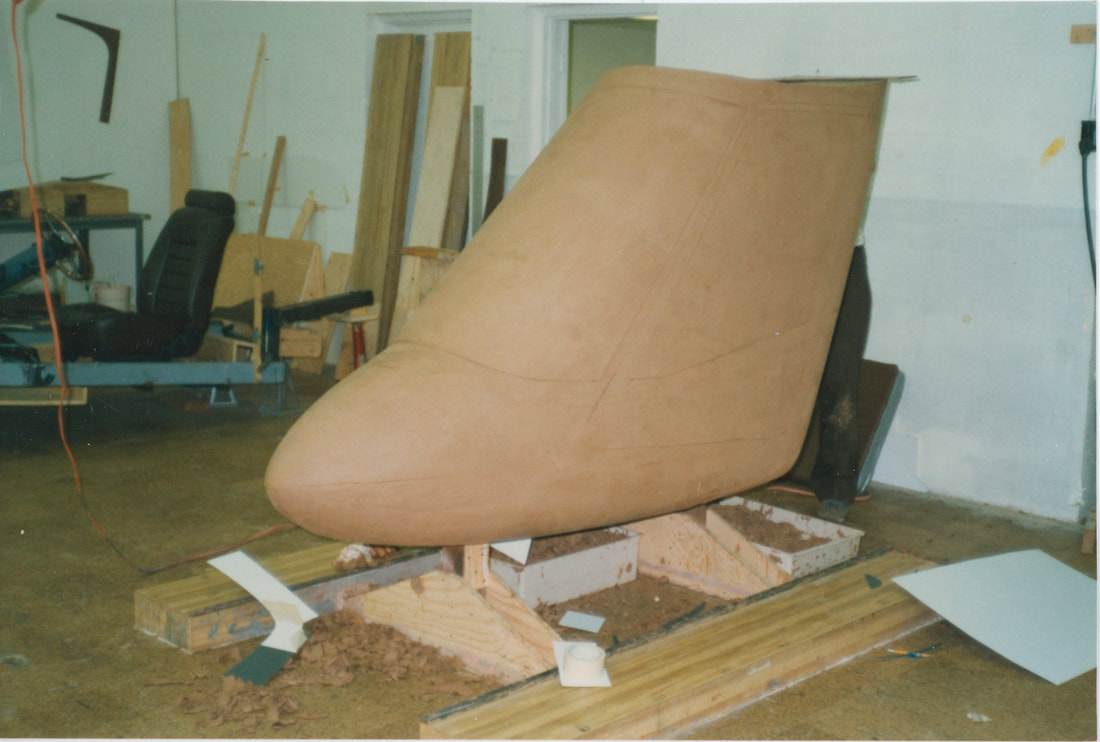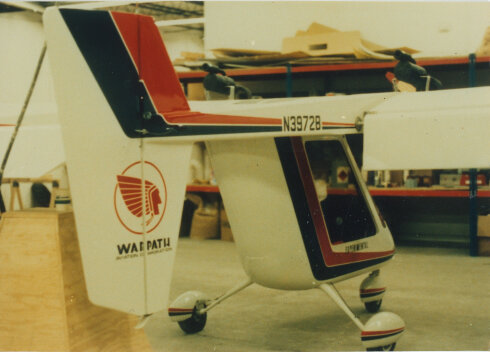I no longer have the ‘Twinster” – I gave it to a gentleman who was going to finish it for his son. As for the history of the design, that is a long story , the high points which I can give you quickly.
I owned a Lazair in the 80’s and wanted to have more safety with a second engine, having experienced several engine failures in flight with those water pump engines. I worked with a friend, Jean Paul Huneault, to develop a design we would build together. My design criterium was 2 engines. His was to sit as far forward as possible. That meant that his design would have to be a pusher. We came up with a solution which meant that the fuselage would be a pod suspended under the wing so that it could be attached so that the center of gravity was somewhat adjustable. Because I had owned a Lazair and was aware of the problem of storing such a light aircraft with such big wings, I required that the wings be foldable.
The best way to fold the wings was to bring them back alongside some structure. Therefore the twin booms. I had already been infatuated with a twin boom aircraft – the Italian amphibian “Riviera”. As well back then there was a twin boom ultralight called, I think, Sadler, of which I was aware. There was a plethora of designs which cropped up, all start-up hopefuls ready to supply the Ultralight enthusiasts. If the ‘Mohawk’ , mentioned by one of your contributors ever flew I do not know.
But my design was no more a copy of another airplane than the Bombardier C Series is a copy of a Boeing or an Embraer is a copy of an Airbus. Aeroncas, Taylorcraft, Cessnas, Pipers surely are not copies of each other. They did, however, follow a similar logic in their designs. The Twinster was also to meet the Ultralight regulations in existence at that time, a reason I built it from aluminum and intended to use the same structure as existed for the Lazair. I then became involved in creating and modifying the regulations for UL in Canada as a member of the NRAC team – the national recreational aircraft advisory group to Transport Canada. Regulations changed and the 254 lb weight limit was raised, permitting stronger aircraft to be built.
At some point my friend did not want to wait any further so he bought a 2 seat Kolb 9with pusher engine) and I was left to finish my airplane. At the time I was teaching in an Aircraft maintenance program and brought the Twinster into the Sheet metal lab as a project for the students and as example of a sheet metal structure. Students did exercises building ribs and wing sections based on drawings I supplied. Somewhere I have a picture of the airplane hanging up in the lab.
I still think it was a viable design. I do not know if the aircraft has been finished and is flying. I trust that I have satisfied some of your curiosity.
--Frank Hofmann, 4 April 2015

